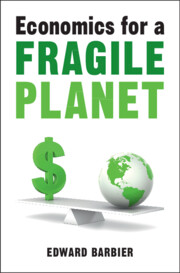Water Scarcity and Economic Growth in Wyoming
Project Summary
The persistence of drought conditions over much or all of the state of Wyoming in recent years has raised concern as to whether water availability relative to use may be limiting economic growth and development in certain regions or even state-wide. This purpose of this research was to address this issue by analyzing the relationship between relative water availability and economic growth across the counties and key water-using sectors in Wyoming. The modeling approach was based on Barbier (2002), which depicted the influence of water utilization on the growth of the economy through a model that included this congestible public good as a productive input for private producers. The result was that the aggregate rate of water utilization by all producers was related directly to the growth of the economy. In Barbier (2002), this relationship was empirically tested through a statistical analysis across countries, and allowing for the fact that some countries face moderate or extreme conditions of water stress. The aim of this research was to modify the water-growth model and apply it to the state of Wyoming. Two types of analysis were envisioned. The first involved examining empirically the relationship between the rate of water utilization and economic growth across the individual counties of Wyoming and over time (i.e. annually). The degree of water stress faced by certain counties in some years was incorporated specifically into the analysis. The second analysis also involved examining the water-growth relationship over time but for the three main water-using sectors in Wyoming's economy: irrigated agriculture (i.e. the annual crop sector), irrigated fodder (i.e. the ranching sector) and the minerals/energy sector. Both the county and sector-level analyses not only revealed the extent to which overall economic growth in Wyoming was affected by water availability relative to use but also identified those counties and sectors whose economic development was especially at risk from water scarcity. Such information may be critical to future water use planning in Wyoming, and for the design and implementation of institutional and allocation mechanisms for water supply in the state.
Principle Investigator: Edward B. Barbier
Funded by: Wyoming Water Development Commission (WWDC) and United States
Geologic Survey (USGS)
Barbier, E.B. and Chaudhry, A. "Water and Growth in an Agricultural Economy." Paper presented at the 13th Annual Conference of the EAERE, Budapest, Hungary, June 25-28, 2004.

